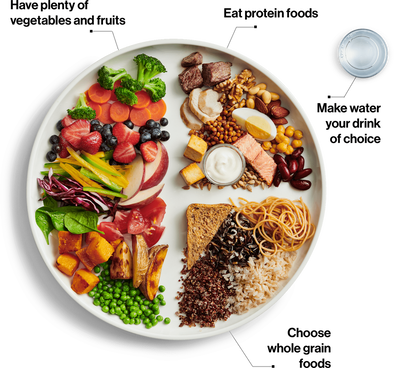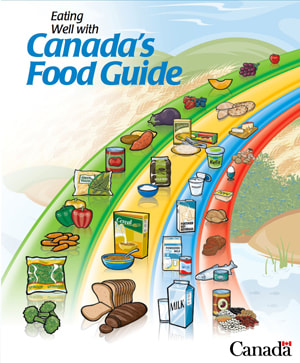|
As many of you know the newest version of the Canadian Food Guide was released earlier this week, in fact it was released on my Birthday! In many ways it was the perfect representation of what most gifts are; a moment of excitement at the sight of the wrapped present followed by confusion followed by the thought in my head “Does this person even know me at all?” (at least to me, I really despise gift giving culture for many reasons but I digress) Before I go forward with my critique, I want to share the things I DO actually like about this food guide. I’m going to seem ungrateful because I’m going to blow past them really quickly as I’m sure you’ve read other blog posts by my amazing colleagues:
Ok, now that the ceremonial participation trophies are given out, let’s tear this thing to shreds.
Ben  So there it is; my brutally honest review and critique of the new Food Guide. Now I realize that this blog post comes across as overly critical and negative – good. I'm not saying that there isn't something positive, but the new Food Guide is admirable but mistaken in my honest opinion. Criticism without constructive ideas is just whining and I’m no whiner. Stay tuned for a follow up Blog Post on what I think they should have done and my full wish list for the next Food Guide, which will hopefully come sooner rather than later. Ben Sit, RD, Sports Dietitian Owner, Founder and President of Evolved Sport and Nutrition Creator and Host of 'Highway to Health' on the Bell Network Complete Lifestyle Management
6 Comments
Larissa
25/1/2019 01:21:46 pm
I'm with you for majority of these critiques! I actually loved the plate method before it became insta-worthy, as you so eloquently said. Apparently HC is going to come out with some further portion guidance later in the year for health care professionals so I'm hoping for something that looks like the handy portion guide.
Reply
Ben
25/1/2019 10:52:07 pm
Thanks for your comment Larissa. I'm glad you agree with many of my points because I had a great amount of anxiety about publishing this. I agree with your comments on vegetarianism which is why I wrote point 6. They could have promoted Dietitians and opted out of giving exact recommendations with just one sentence!
Reply
Carolyn Dicks
2/2/2019 09:03:24 am
Wow, you didn’t pull any punches. Thanks for this brutally honest and credible critique. I too have reservations about the food guide although admittedly it was for me a beautifully wrapped just opened gift at initial glances. (I love that analogy of yours!) It is a bit too abstract. I do miss the portions; a cool accompanying infograpgic of sorts would do nicely so hopefully that will come. I love that you referenced “Just the Basics”. I still think this is one of the most user friendly guides for eating inside and outside the diabetic population. Thank you for your point 2. Living in Newfoundland we are mostly culturally homogeneous but we are unique in many respects to the rest of Canada in that even in our more urbanely populated spots we get a heck of a lot of our protein from large and small game. I will never tell a Newfoundlander to reduce the amount of moose and rabbit they serve their families. Sure we have reputedly the worst dietary habits in all of Canada but we do a pretty good job of consuming locally sourced protein/fruits (partridgeberries!) and vegetables, especially in our rural and coastal communities. You are right on about HC not promoting dietitians enough. Bad enough we are competing with the pseudoscientific nutrition noise we are bombarded with daily from the likes of Aarbonne and essential oil purveyors dispensing nutritional advice. Health Canada doesn’t seem to have our backs yet by any stretch.
Reply
7/5/2020 05:07:57 am
I can set up my new idea from this post. It gives in depth information. Thanks for this valuable information for all,. To find top hashtag on instagrma, please go with our link
Reply
Leave a Reply. |
Categories
All
Archives
November 2021
|
- Home/ News
- About
- Services/ Store
- Media
-
Learning Center
- ESN Athletic and Healthy Lifestyle Learning Center >
-
Professional Learning Center
>
-
The ESN Sports Nutrition Certificate
>
- ESN Learning Center - Sports Nutrition Certificate Level 1 >
- ESN Learning Center Sports Nutrition Certificate Level 2 >
-
ESN Learning Center - Sports Nutrition Certificate Level 3
>
- Module 1 - Periodization for the Athlete
- Module 2 - Nutrition Strategies to Optimize Recovery
- Module 3 - Sports Nutrition for Children and Young Athletes
- Module 4 - Sports Nutrition for the Aging Athlete
- Module 5 - Nutritional Strategies for Injury Prevention and Concussions
- Module 6 - Nutritional Strategies for the Travelling Athlete
- Module 7 - Tournament Nutrition Strategies
-
The ESN Sports Nutrition Certificate
>
- Contact
Proudly powered by Weebly



 RSS Feed
RSS Feed